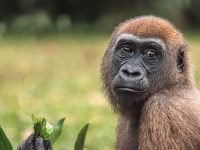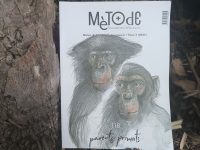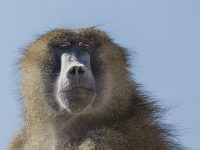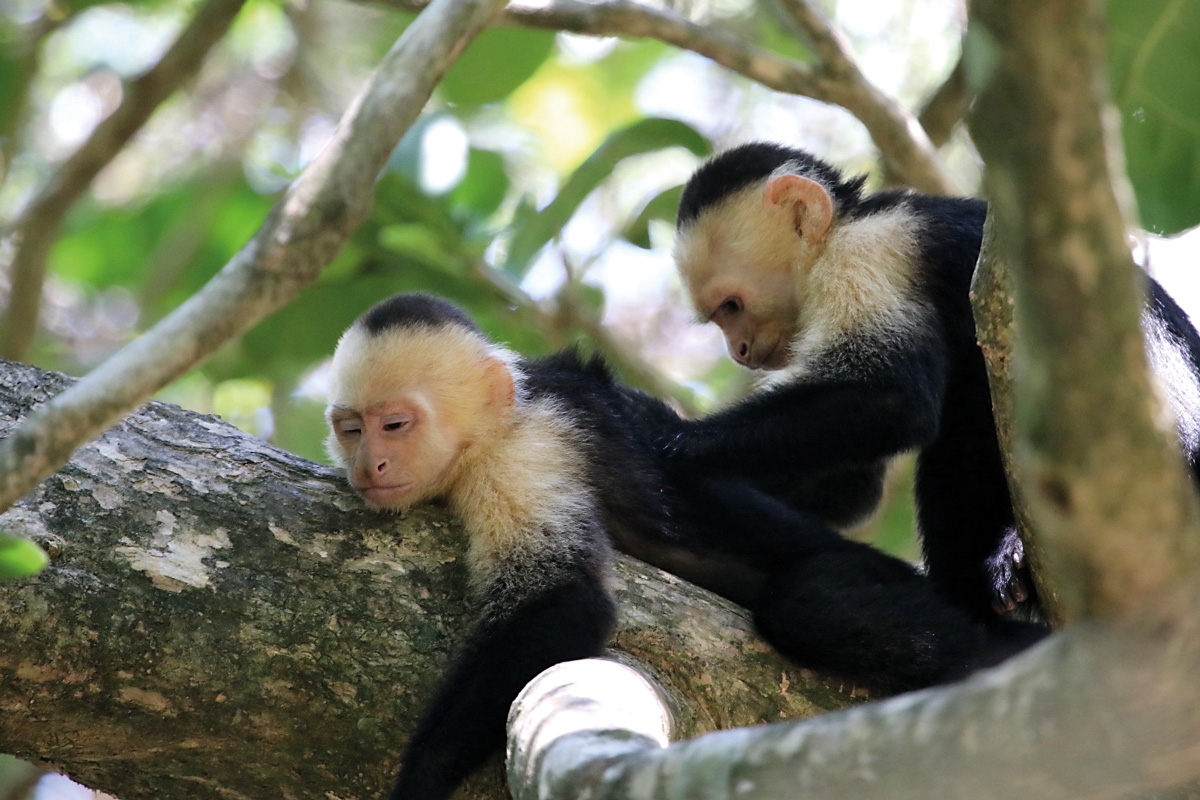
Primates usually live in groups and interact with other group members, sometimes forming preferential long-term relationships. Sociality provides primates with benefits like support and learning opportunities that ultimately increase their fitness. Sociality also poses challenges in terms of competition and coordination, though, which primates face with the use of different behavioural and cognitive strategies. Moreover, primates show important variation in sociality, both between species, between groups, across individuals and through developmental stages. Overall, observational studies are a powerful tool to understand the richness in primate sociality, and the factors that explain the emergence and maintenance of specific forms of sociality and behavioural traits.
Keywords: sociality, development, primates, social learning, evolution.
The social life of primates is enormously diverse. The solitary orangutans, the pair-bonded gibbons, gorillas’ harems, and the large groups of male and female chimpanzees that split into smaller groups depending on the availability of resources (a phenomenon called fission-fusion) are just some examples of the apes’ varied social organization (let alone the monkeys!). This richness, together with the fact that studying our closest relatives can shed light on our own evolution, explains the interest of many ethologists on primate sociality.
Which types of social interactions do primates engage in? What are the benefits and challenges of social behaviour? How much diversity is there in the sociality of different species as well as between groups and individuals of the same species? These are only some of the questions that primatologists attempt to answer through the observation of primate behaviour.
Social interactions in primates
The systematic observation of non-human primates (hereafter, primates) is a challenging but rewarding endeavour that can provide abundant information about their behaviour, including different aspects of their sociality. Mostly equipped with paper and pencil, audio-recorders or notepads, primatologists first describe and then record the occurrence and duration of different behaviours of interest, to identify the explanatory principles that account for their proximate and ultimate causes. Primatologists, for instance, can observe how frequently mothers interact with their offspring, and then assess how the frequency of these interactions varies with infant age, or if it differs depending on the mothers’ rank, or the infants’ sex. In this way, they can understand how maternal investment changes through offspring development, whether higher-ranking mothers invest more or less than lower-ranking ones, or if mothers generally invest more in one sex or the other. By comparing species, primatologists can also try to understand the evolution of social traits and the selective pressures that may have shaped them in the past.
The observational study of primate social behaviour has a long history and has benefited from the contribution of researchers like Jeanne Altmann, Christoph Boesch, Robin Dunbar, Diane Fossey, Jane Goodall, Robert Hinde, Carel van Schaik, or Joan Silk, just to name a few. Among other things, these studies have contributed to reveal the complexity of primate social behaviour, and the evolutionary foundations of several aspects of human sociality.
Most primates live in large, stable social groups where they frequently interact with other individuals. Social interactions can be affiliative or agonistic. Agonistic interactions are social interactions that involve threatening, aggressive or submissive behaviour. They may happen when individuals try to gain access to limited resources, like food or mates, and can occur during conflicts with different degrees of intensity, contributing to the establishment of the structure and dominance hierarchy of the group. In contrast, affiliative interactions are friendly and non-threatening exchanges that establish, maintain or reinforce social bonds between individuals. They usually happen in non-agonistic contexts, although they can also be exchanged after agonistic interactions, for instance to reconciliate or console victims of aggression. Affiliative interactions generally involve behaviours like spatial proximity, which has traditionally been used as a measure of social proximity, social play (i.e., an exaggerated, spontaneous, and self-rewarding behaviour, with no immediate function; Burghardt, 2005) or grooming (i.e., cleaning another’s fur with hands or mouth; Mitani et al., 2012).
The benefits of sociality
Beyond removing ectoparasites and dirt from the partner’s body, grooming triggers the activation of endorphins in the central nervous system, which relaxes the animals and facilitates the maintenance and establishment of long-term social relationships based on reciprocal trust and obligation (Dunbar, 2012). Moreover, in most primate species, females mostly groom with females that have a similar rank (a measure of priority of access to limited resources), although higher-ranking females usually receive more grooming than they give. These findings suggest that lower-ranking females may not only use grooming for hygienic or relaxing purposes, but also within the context of «biological markets», to exchange goods and services with other group members, like agonistic support from higher-ranking females during aggression, access to feeding or drinking sites, support to raise offspring, access to others’ infants or protection against predators (see Sánchez-Amaro & Amici, 2015, for a critical discussion). In species where males remain in their natal group upon reaching sexual maturity and females migrate, like chimpanzees, males are the ones that form the strongest relationships with each other (Mitani et al., 2012).
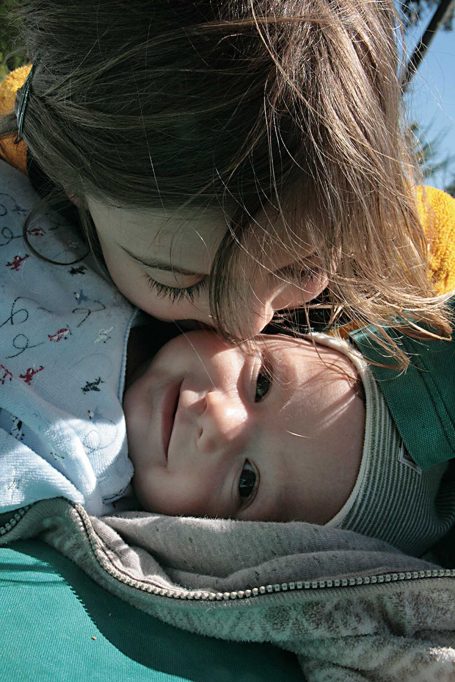
As in other primates, humans also interact socially from an early age. / F. Amici
Social interactions among primates are also established and maintained through social play. Social play sessions may involve two or more individuals and elicit different play styles (e.g., with less physical contact, like object play or acrobatic play, or with more physical contact, like sparring and wrestling). Therefore, play is a risky behaviour that may easily escalate into aggression, and primates often rely on communicative signals (e.g., play faces), which clearly convey the playful intent to the partner and thus reduce the risk of aggressive escalations. Having no clear immediate goal, the adaptive function of play has long been unclear, although it is now thought that play allows animals to acquire important social knowledge and skills, strengthen their social relationships and acquire new social partners (Burghardt, 2005). In fact, although in most primate species individuals engage in social play throughout their lives, play is especially frequent before individuals reach sexual maturity, when they are still laying the foundations of the larger social networks they will have as adults. Another reason why social interactions are important for primates is that they provide individuals with continuous opportunities for social learning. Social learning is a very broad concept referring to different forms of learning that are affected by the observation of conspecifics or by the interaction with them (Heyes, 1994). In several taxa, individuals are more likely to show a behaviour if this is previously shown by other group members (a phenomenon called social facilitation) and are more prone to go to places where other group members are (local enhancement), or to interact with objects other group members interact with (object enhancement). Some primate species, however, can also engage in more complex forms of social learning, by for instance using the same foraging technique used by other group members to obtain food (imitation). For some researchers, these findings suggest that these primate species have the necessary prerequisites for the emergence of social traditions and cultures, by being able to reliable copy others’ behaviours and artefacts (products that provide information such as an abandoned nest, dug holes, or tree markings) in complex ways; however, other researchers suggest that primates rather acquire behaviours and artefacts individually, and are induced to do so through simpler forms of social learning (Tennie et al., 2020). In any case, by favouring coordination across individuals and allowing the quick transmission of novel instrumental knowledge and skills in a group, social learning can be very beneficial to successfully cope with novel socio-ecological challenges, especially in complex dynamic environments (Reader & Laland, 2003).
Beyond the benefits of sociality described above, it has been found that long-lasting relationships provide crucial fitness benefits to primates, increasing their longevity, reproductive success and offspring survival (e.g., Silk et al., 2009). In baboons (Papio cynocephalus ursinus), for example, females that form long-lasting affiliative relationships with other females raise offspring that live significantly longer than the offspring of females with weaker social relationships. It is possible that long-lasting relationships increase the support that individuals receive during aggressive interactions with other group members, or the tolerance they experience when accessing limited resources. Moreover, long-lasting relationships may also have a positive effect on how primates deal with stressful events, and thus on their immune systems, resulting in better health and higher longevity (e.g., Archie et al., 2014).
Sociality as a challenge
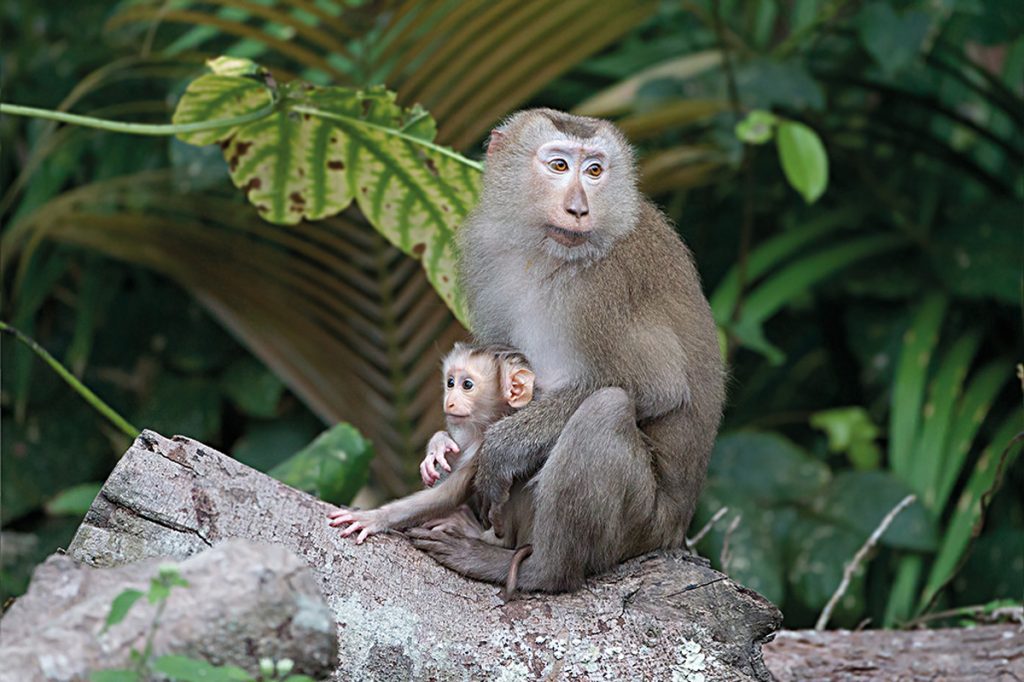
Several primate species preferentially engage in affiliative social interactions with their kin, which largely share their own genes, but they can also engage in long-term preferential relationships with unrelated individuals. In the picture, a pig-tailed macaque (Macaca leonina) with her offspring. / J. J. Harrison
Besides the benefits mentioned earlier, living in groups also provides individuals with important challenges, like making the animals more conspicuous to predators and increasing the probability of illness transmission. Moreover, sociality brings conflicts since individuals need to compete for resources like food or mates. Therefore, social animals may especially benefit from having behavioural or cognitive strategies that help them outcompete others (Whiten & Byrne, 1988). In primates, for instance, higher-ranking individuals usually try to monopolize resources, and the other group members may need to rely on specific strategies to nonetheless get their share. Subordinates may for instance refrain from retrieving resources when higher-ranking individuals are watching, or they may wait until these are looking in other directions. Higher-ranking individuals, in contrast, may especially benefit from monitoring subordinates in case they get access to food, or maintaining proximity or visual contact to resources that can be easily contested. According to the social intelligence hypothesis, indeed, cognitive skills might have evolved in response to the challenges of interacting with other individuals (Whiten & Byrne, 1988). Sometimes conflicts lead to overt confrontation, though, and agonistic behaviours take place, with the consequent risk of physical harm and stress, which can ultimately affect fitness. At this point, post-conflict reconciliation and consolation behaviours help attenuate these effects.
Perhaps surprisingly, the need to coordinate with other group members posits at least as much challenge as the need to outcompete them. Primates spend a lot of time in social interactions, and sometimes engage in group activities that may require coordination, like joint travelling, predatory defence or cooperative hunting. The need to coordinate with each other might be evolutionarily linked to the emergence of different skills, like theory of mind – the cognitive ability to understand that others have mental states and desires that are different to one’s own – and communication. Reading others’ intentions, for instance, may be useful to anticipate what others will be doing, and more effectively coordinate. With regards to communication, primates produce signals in different modalities, like vocalizations, gestures, and facial expressions, displaying their emotions and intentions, and facilitating coordination with others. Through age and social experience, primates become more selective in the signals they use, and develop more effective forms of communication, learning how to best elicit specific responses by other group members.
Variation in sociality
As shown in the introductory paragraph, primate species differ in their social organization (i.e., whether they are solitary, pair-bonded, or live in one-male-multi-female or multimale-multifemale groups). Also, they differ in their social tolerance levels, with some species seldom experiencing severe aggression and having more egalitarian social systems, in which group members more freely interact with each other and are more likely cooperate, whereas others are more despotic, often experiencing severe aggression and mostly restricting their interactions with maternal kin (Joly et al., 2017). Moreover, primate species differ in their levels of fission-fusion dynamics, with some species being more cohesive, and others living in social groups that often split into subgroups of varying size and composition (Aureli et al., 2008).
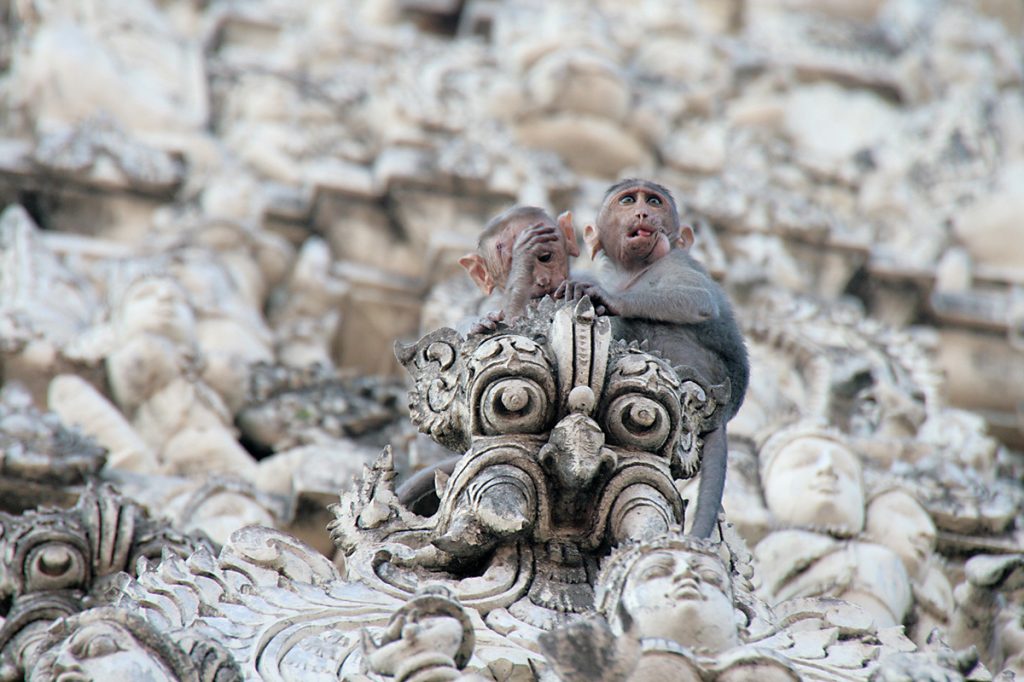
Social interactions among primates are also established and maintained through social play that may involve two or more individuals and elicit different play styles (with less or more physical contact). In the image, two young macaques playing with each other. / F. Amici
Although sociality has an important genetic component, it is also strongly affected by the environmental conditions and the experiences that individuals face throughout their lives. Differences in sociality, therefore, exist not only between but also within species. Depending on the environment in which they live, for instance, different groups of the same species may face different challenges (e.g., in terms of resources available or predation pressure), with effects on their individuals’ sociality. An extreme example are groups that live in captivity, where individuals have little freedom of movement, experience no predation, and are usually fully provisioned by humans, so that they do not need to invest time in vigilance or foraging. As a result, they tend to be more tolerant over food and generally devote more time to social interactions compared to wild conspecifics (Amici et al., 2021). Also, patterns of social interactions vary between individuals of the same group (e.g., due to sex, rank, or personality), as well as within the same individuals depending on their developmental stage. Examples of inter-individual variation in sociality include the previously mentioned example of higher-ranking individuals, who tend to receive more grooming than lower-ranking ones, and differences in paternal investment, as mothers are generally more likely than fathers to engage in energetically demanding activities with their offspring. With regards to developmental variation in sociality, it has been observed that primates increase the frequency and variety of their social interactions with age, gradually building the social networks they will have as adults.
In summary, sociality plays a crucial role in the life of primates. By socially interacting with different partners, individuals obtain benefits like cleaning services, access to resources, relax, support during conflicts, and opportunities to learn socially, which ultimately contribute to increase their fitness. Sociality also poses challenges to primates, though, in the form of competition and the need to coordinate. This results in extensive variation at different levels of analysis, and in the emergence of different behavioural and cognitive strategies to face the opportunities and challenges of social interactions. Observational studies are not only essential to understand the richness and variety in primate sociality, but also to identify, with a comparative-evolutionary approach, the factors that explain the emergence of specific forms of sociality, and behavioural and cognitive traits. By gaining a better understanding of primate species, we hope to better grasp their nature and the need to protect them and ensure their survival for generations to come.
References
Amici, F., Widdig, A., von Fersen, L., Lopez Caicoya, A., & Majolo, B. (2021). Intra-specific variation in the social behaviour of Barbary macaques (Macaca sylvanus). Frontiers in Psychology, 12, 666166. https://doi.org/10.3389/fpsyg.2021.666166
Archie, E. A., Tung, J., Clark, M., Altmann, J., & Alberts, S. C. (2014). Social affiliation matters: Both same-sex and opposite-sex relationships predict survival in wild female baboons. Proceedings of the Royal Society B, 281, 20141261. https://doi.org/10.1098/rspb.2014.1261
Aureli, F., Schaffner, C. M., Boesch, C., Bearder, S. K., Call, J., Chapman, C. A., Connor, R., Di Fiore, A., Dunbar, R. I. M., Petmann, S., Manson, J. H., Ramos-Fernandez, G., Strier, K. B., & van Schaik, C. P. (2008). Fission-fusion dynamics: New research frameworks. Current Anthropology, 48, 627–654. https://doi.org/10.1086/586708
Burghardt, G. M. (2005). The genesis of animal play: Testing the limits. MIT Press.
Dunbar, R. I. M. (2012). Bridging the bonding gap: The transition from primates to humans. Philosophical Transactions of the Royal Society B, 367, 1837–1846. https://doi.org/10.1098/rstb.2011.0217
Heyes, C. M. (1994). Social learning in animals: Categories and mechanisms. Biological Reviews, 69, 207–231. https://doi.org/10.1111/j.1469-185X.1994.tb01506.x
Joly, M., Micheletta, J., De Marco, A., Langermans, J. A., Sterck, E. H. M., & Waller, B. M. (2017). Comparing physical and social cognitive skills in macaque species with different degrees of social tolerance. Proceedings of the Royal Society B, 284, 20162738. https://doi.org/10.1098/rspb.2016.2738
Mitani, J. C., Call, J., Kappeler, P. M., Palombit, R., & Silk, J. (Eds.). (2012). The evolution of primate societies. University of Chicago Press.
Reader, S. M., & Laland, K. N. (2003). Animal innovation. Oxford University Press.
Sánchez-Amaro, A., & Amici, F. (2015). Are primates out of the market? Animal Behaviour, 110, 51–60. https://doi.org/10.1016/j.anbehav.2015.09.020
Silk, J. B., Beehner, J. C., Bergman, T. J., Crockdord, C., Engh, A. L., Moscovice, L. R., Wittig, R. M., Seyfarth, R. M., & Cheney, D. L. (2009). The benefits of social capital: Close social bonds among female baboons enhance offspring survival. Proceedings of the Royal Society B, 276, 3099–3104. https://doi.org/10.1098/rspb.2009.0681
Tennie, C., Bandini, E., Van Schaik, C. P., & Hopper, L. M. (2020). The zone of latent solutions and its relevance to understanding ape cultures. Biology & Philosophy, 35, 1–42. https://doi.org/10.1007/s10539-020-09769-9
Whiten, A., & Byrne, R. W. (1988). Tactical deception in primates. Behavioral and Brain Sciences, 11, 233–273. https://doi.org/10.1017/S0140525X00049682

